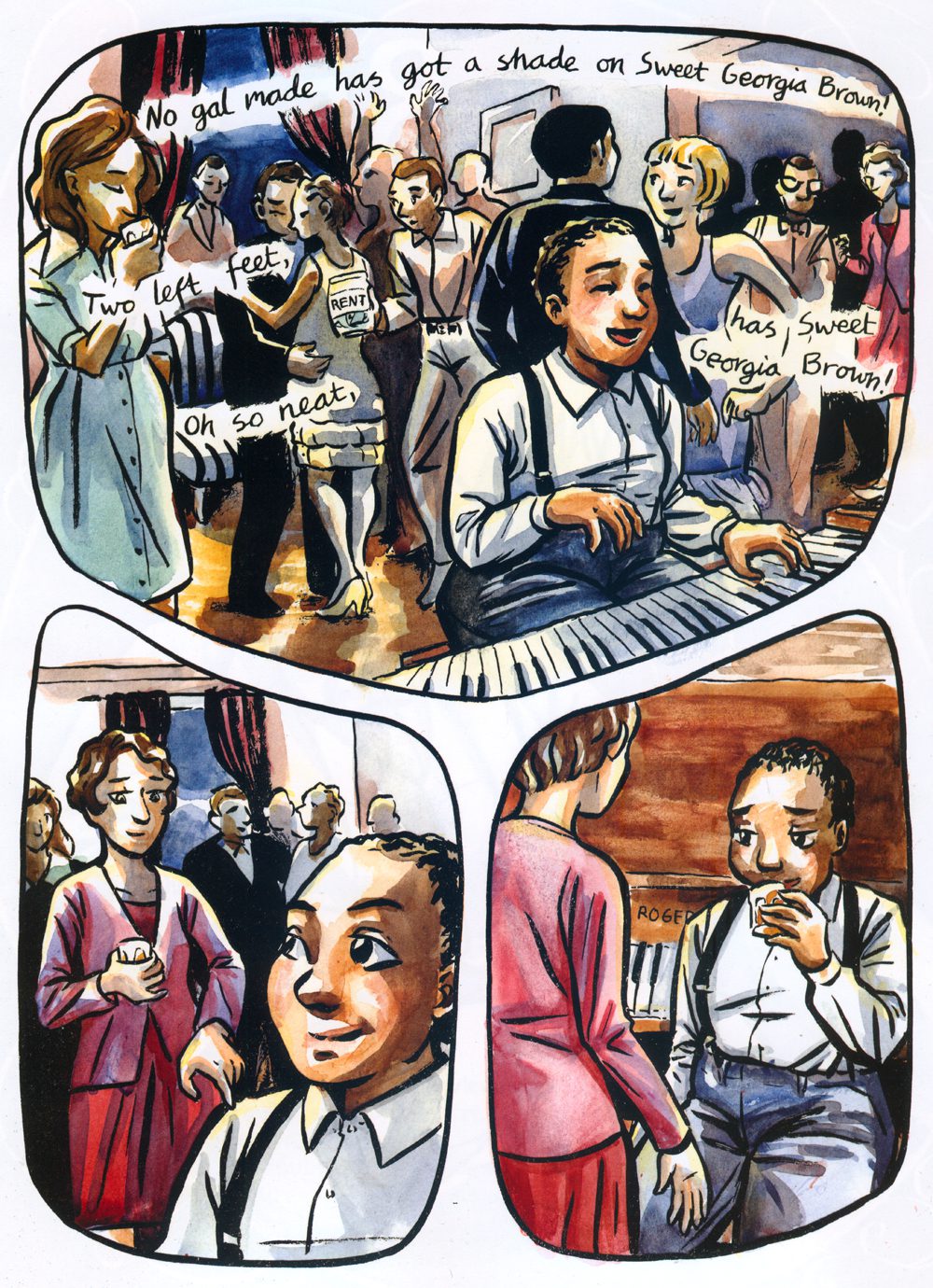One of the goals of the Fresh Comics series is to shine some light on superb works of comic storytelling. Another is to look a little deeper into the content of these superb comics and to ask “fresh” questions about them. This month I take a look at If This Be Sin and White Comanche, two comics that tell the true stories of women who emerged resilient and empowered after enduring particular traumas and abuses of their time. 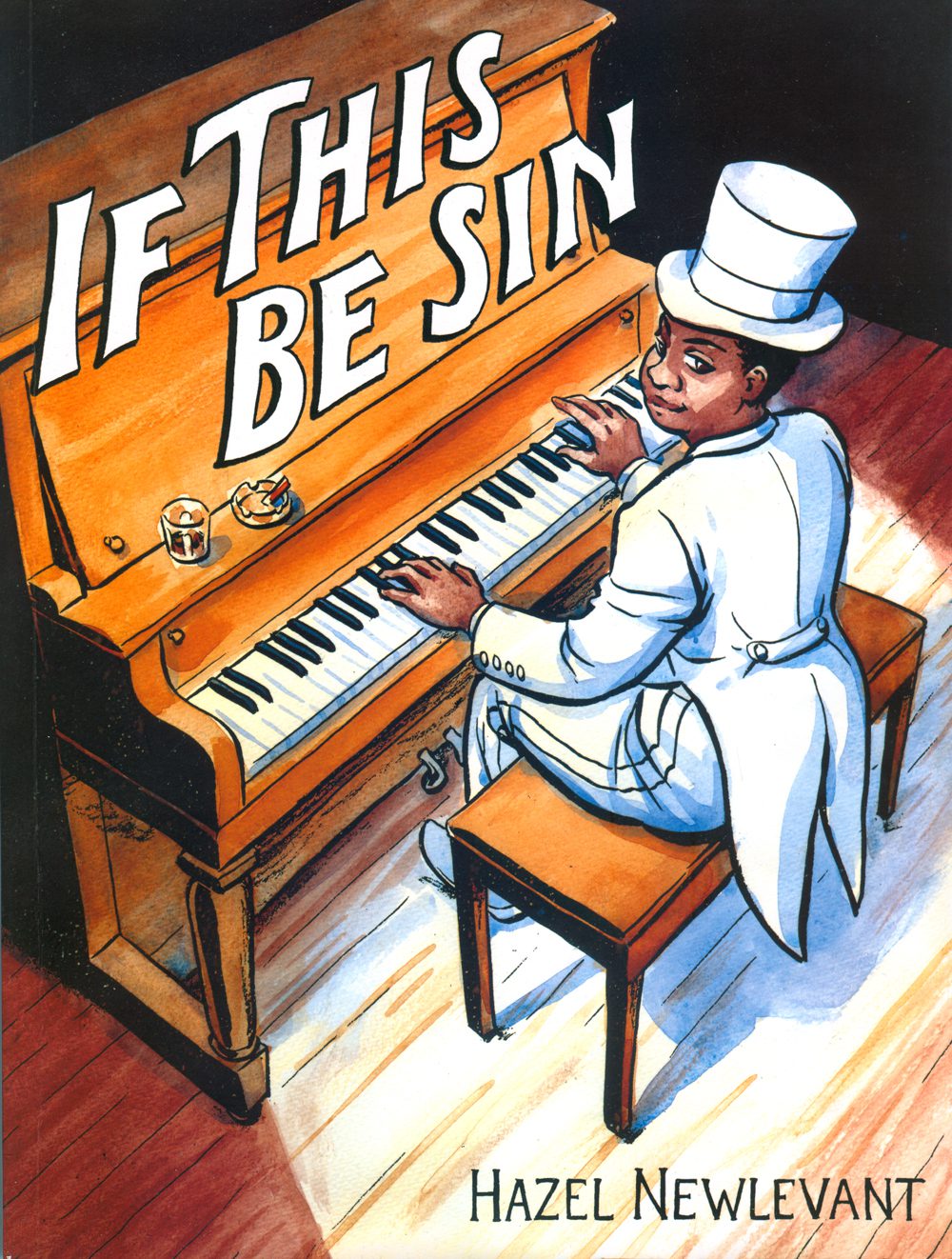 Even though I find both of these works exemplary and to be what I wish were required reading for everyone, I’m still compelled to ask myself why I find these stories so remarkable.
Even though I find both of these works exemplary and to be what I wish were required reading for everyone, I’m still compelled to ask myself why I find these stories so remarkable.
If This Be Sin, by SVA graduate Hazel Newlevant, is about Gladys Bentley, a butch lesbian singer and pianist who performed in drag during the Harlem Renaissance. She was a successful and spirited entertainer who later underwent hormone treatment and claimed to have been saved from her “strange affliction.” She died at age 52 in ladylike dress and very much in the closet.
White Comanche, by underground cartoonist Jaxon, is about Cynthia Ann Parker, a white woman who as a child was kidnapped by a Comanche tribe and subsequently embraced their culture, eventually marrying a chief and having a family of her own. Later in life she was repossessed against her will by her white family and died from a broken heart at age 45.
Are these stories remarkable because they are heartbreaking? Is it because they show a certain fortitude of the human spirit? Or because they remind us that things are a little better these days?
In the cases of both comics, this is and isn’t true. So-called “cross-dressing” or being a butch lesbian is no longer legally punishable in the United States, but that certainly doesn’t mean people aren’t suffering mistreatment for it. The story of Gladys Bentley is not entirely unfamiliar nowadays.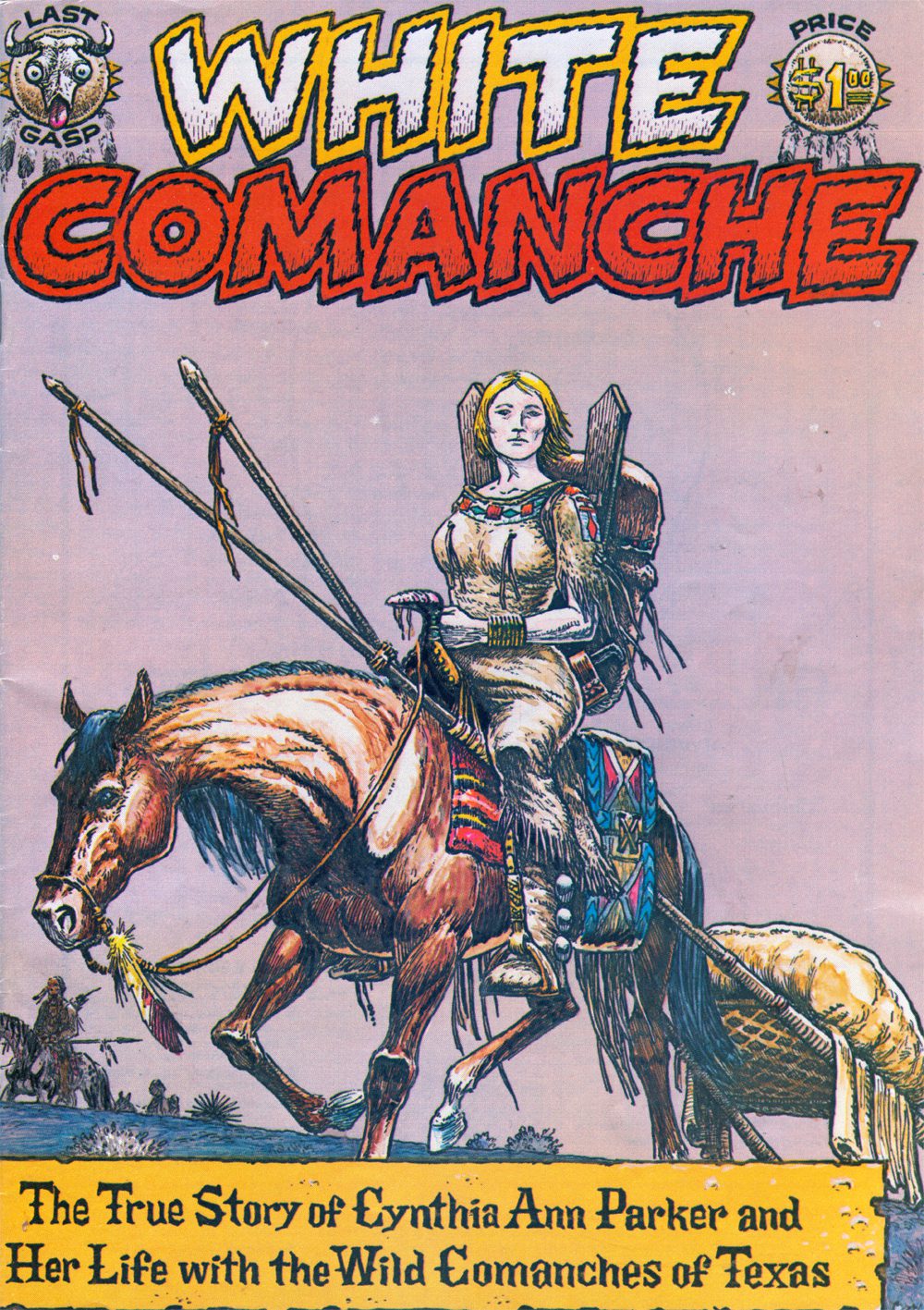 And although we no longer hear news of white children being kidnapped by Native American tribes, child abductions and human trafficking of women and children are still a problem. So are things really better?
And although we no longer hear news of white children being kidnapped by Native American tribes, child abductions and human trafficking of women and children are still a problem. So are things really better?
Instead, maybe these stories capture our attention because they defy the hero stereotype. As a black drag performer, Gladys Bentley certainly does this. Even after a solid decade of “voguing,” eight successful seasons of RuPaul’s Drag Race, and now with the popularity of J-Setting and The Prancing Elites Project reality show, queer black performance culture is still not considered status quo. We also know from the stories of Patty Hearst, Elizabeth Smart, and even the Netflix sitcom, The Unbreakable Kimmy Schmidt, that when white women survive kidnappings everyone pays attention. People loved seeing Patty “The Publishing Heiress” become “Tania the Urban Guerrilla.” Is this the same reason we love to imagine Cynthia Ann Parker as a Comanche Indian?
I think the allure of these stories has more to do with the importance of freedom and the tragedy of its absence—a constant theme in American storytelling. We Americans (in the generic and maybe fictional sense) tend to root for the underdog because somehow we imagine that that’s who we are. Ironically, most American underdogs have been written out of our history books. Here are the stories of two of them.
***
If you’ve never heard of Gladys Bentley, then start here and start quickly. She’s a must-know for anyone interested in women’s history, queer history, African American and Trinidadian American history or the Harlem Renaissance. Bentley was a lesbian and openly so. She dressed in men’s clothing, but refused to say that she was impersonating one. She was a masculine woman. She was butch.
Stylistically, If This Be Sin is robust and dreamy. Newlevant’s watercolors bring new life to this old tale in rich blues and burnt umbers. The panel shapes read like melodic dew drops or maybe tears—a style that she uses specifically for this comic, but doesn’t seem to repeat in other work. The depth of storytelling in just 16 pages is a feat of wizardry. If This Be Sin could easily be expanded to a 200-page graphic novel (I hope).
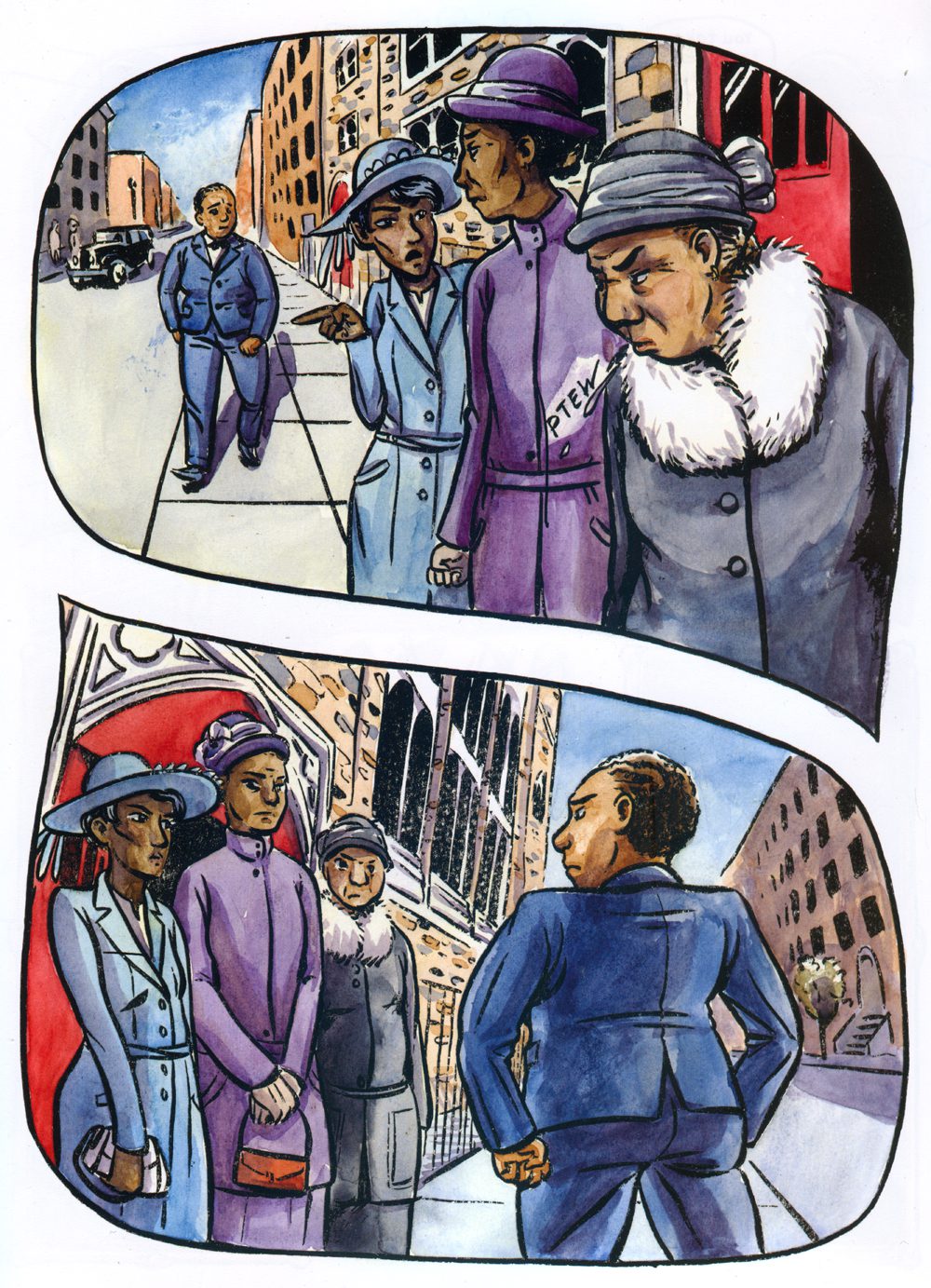 The first part introduces Bentley as a cool, confident piano player with a manly swagger. She boasts to a pretty white woman who encourages her to audition for a nightclub, “Please. I can satisfy them as well as any man.” She lands the gig, of course, and is flying high as she exits the club, but is promptly snubbed by a group of churchgoing ladies on the street. This is a major bummer to Bentley and prompts her to flash back on several childhood experiences that function as a reminder that this is her true self: her mother yelling at her for dressing like a boy, crushing hard on her female schoolteacher, playing house and always being the “papa.” She is snapped back to reality when drag queens—a part of the ensemble cast at the nightclub—lean in to share the dressing room mirror that Bentley has zoned out in front of. The show must go on.
The first part introduces Bentley as a cool, confident piano player with a manly swagger. She boasts to a pretty white woman who encourages her to audition for a nightclub, “Please. I can satisfy them as well as any man.” She lands the gig, of course, and is flying high as she exits the club, but is promptly snubbed by a group of churchgoing ladies on the street. This is a major bummer to Bentley and prompts her to flash back on several childhood experiences that function as a reminder that this is her true self: her mother yelling at her for dressing like a boy, crushing hard on her female schoolteacher, playing house and always being the “papa.” She is snapped back to reality when drag queens—a part of the ensemble cast at the nightclub—lean in to share the dressing room mirror that Bentley has zoned out in front of. The show must go on.
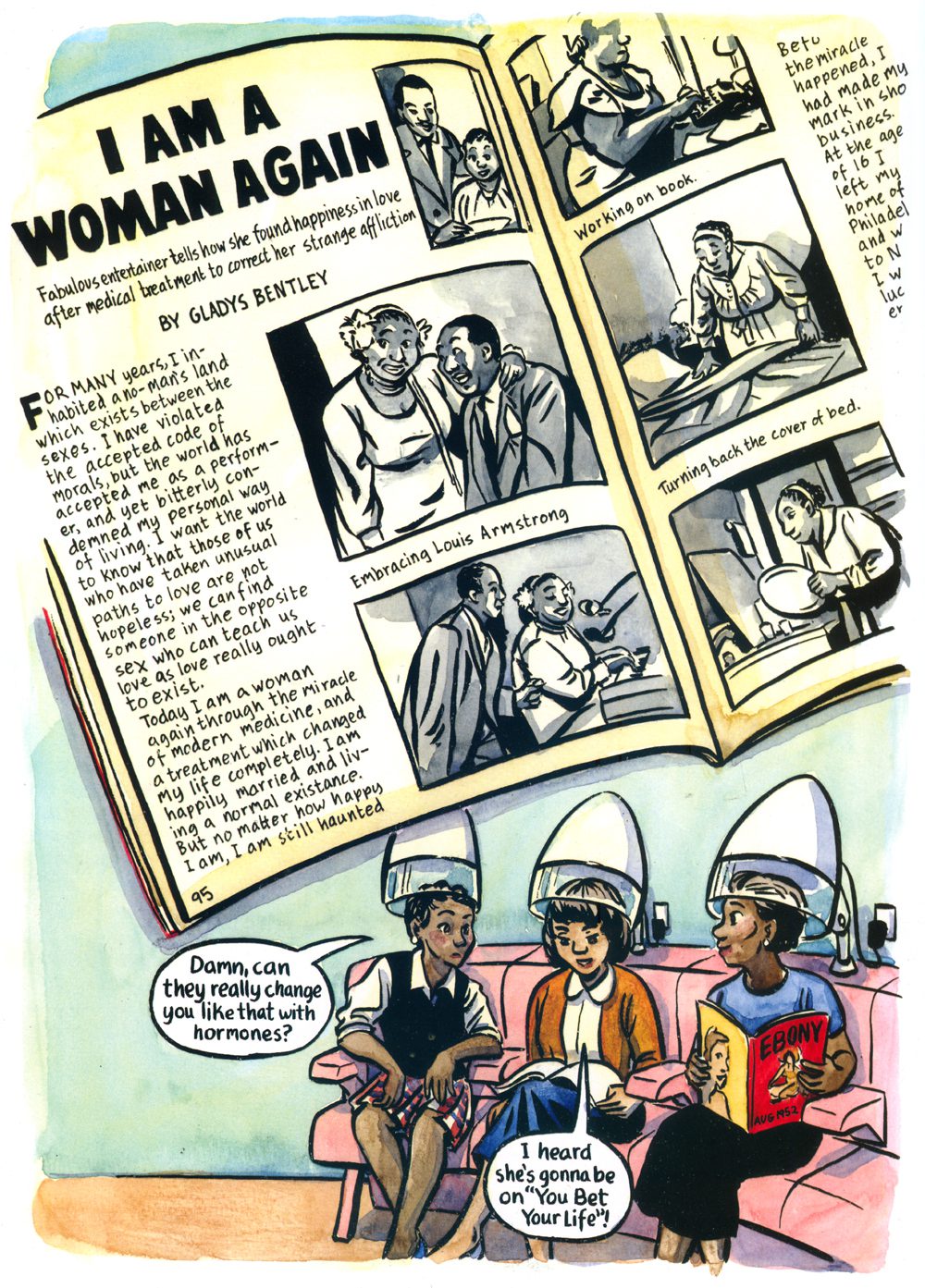 In the middle of Bentley’s performance—a gender-bending re-write of “Georgia Brown”—the queer nightclub is busted by police. She narrowly escapes arrest. After that, the comic skips to Bentley’s later life and excerpts her essay from Ebony Magazine about her hormone treatment that supposedly cured her “affliction.” In 1952 Bentley claimed that she was finally “normal” and urged readers not to give up on those who have “taken unusual paths to love.” In 1958 she performed “Them There Eyes” on the popular television show You Bet Your Life and discussed her transformation in front of a live audience. Afterwards, Bentley returned to her dressing room sad, conflicted and missing the days when she sported a top hat, bow tie and tail coat.
In the middle of Bentley’s performance—a gender-bending re-write of “Georgia Brown”—the queer nightclub is busted by police. She narrowly escapes arrest. After that, the comic skips to Bentley’s later life and excerpts her essay from Ebony Magazine about her hormone treatment that supposedly cured her “affliction.” In 1952 Bentley claimed that she was finally “normal” and urged readers not to give up on those who have “taken unusual paths to love.” In 1958 she performed “Them There Eyes” on the popular television show You Bet Your Life and discussed her transformation in front of a live audience. Afterwards, Bentley returned to her dressing room sad, conflicted and missing the days when she sported a top hat, bow tie and tail coat.
If This Be Sin is available for purchase here.
***
White Comanche (1977)
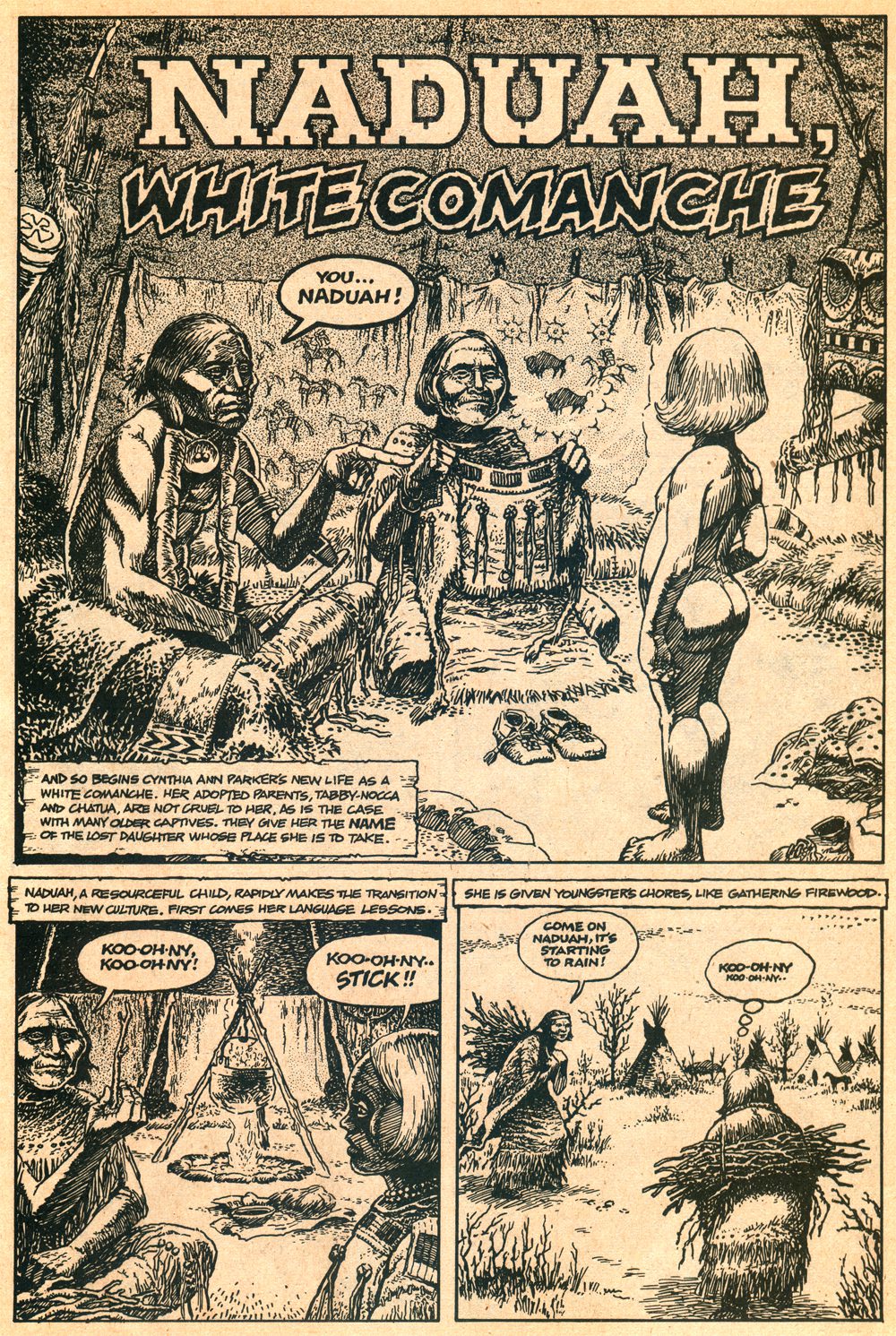 Cynthia Ann Parker—aka “White Comanche”—was abducted in Texas by a Comanche tribe when her family’s fort was invaded in 1836. This was the same year Texas transitioned from a Mexican province to an independent republic. This was an incredibly volatile time in Texas. Camp raids were not uncommon and Cynthia Ann was one among many colonist and Tejano children who were snatched by the Comanche. But she might be the only one who fully embraced Comanche culture.
Cynthia Ann Parker—aka “White Comanche”—was abducted in Texas by a Comanche tribe when her family’s fort was invaded in 1836. This was the same year Texas transitioned from a Mexican province to an independent republic. This was an incredibly volatile time in Texas. Camp raids were not uncommon and Cynthia Ann was one among many colonist and Tejano children who were snatched by the Comanche. But she might be the only one who fully embraced Comanche culture.
Parker was a member of one of the many English-speaking colonist families that came to Texas to claim territory. She was just 11 years old when she was abducted and welcomed into the Comanche tribe to help replenish the birthrate. She was adopted by a couple, given the name “Naduah,” and raised as their own daughter. She later married Peta Nocona, a chieftain who reportedly loved her so much he never took another wife. Together, they had three children including Quanah Parker, who would be the last Comanche chief.
In 1860, during The Battle of Pease River, Parker was “re-captured” by white settlers who recognized her as the long-lost Parker girl. She was separated from her husband and sons, but was taken along with her nine-month old daughter, Topsannah. At 35 years old—after 24 years of life with the Comanche—Parker was absolutely miserable to be back at “home.” She barely spoke or understood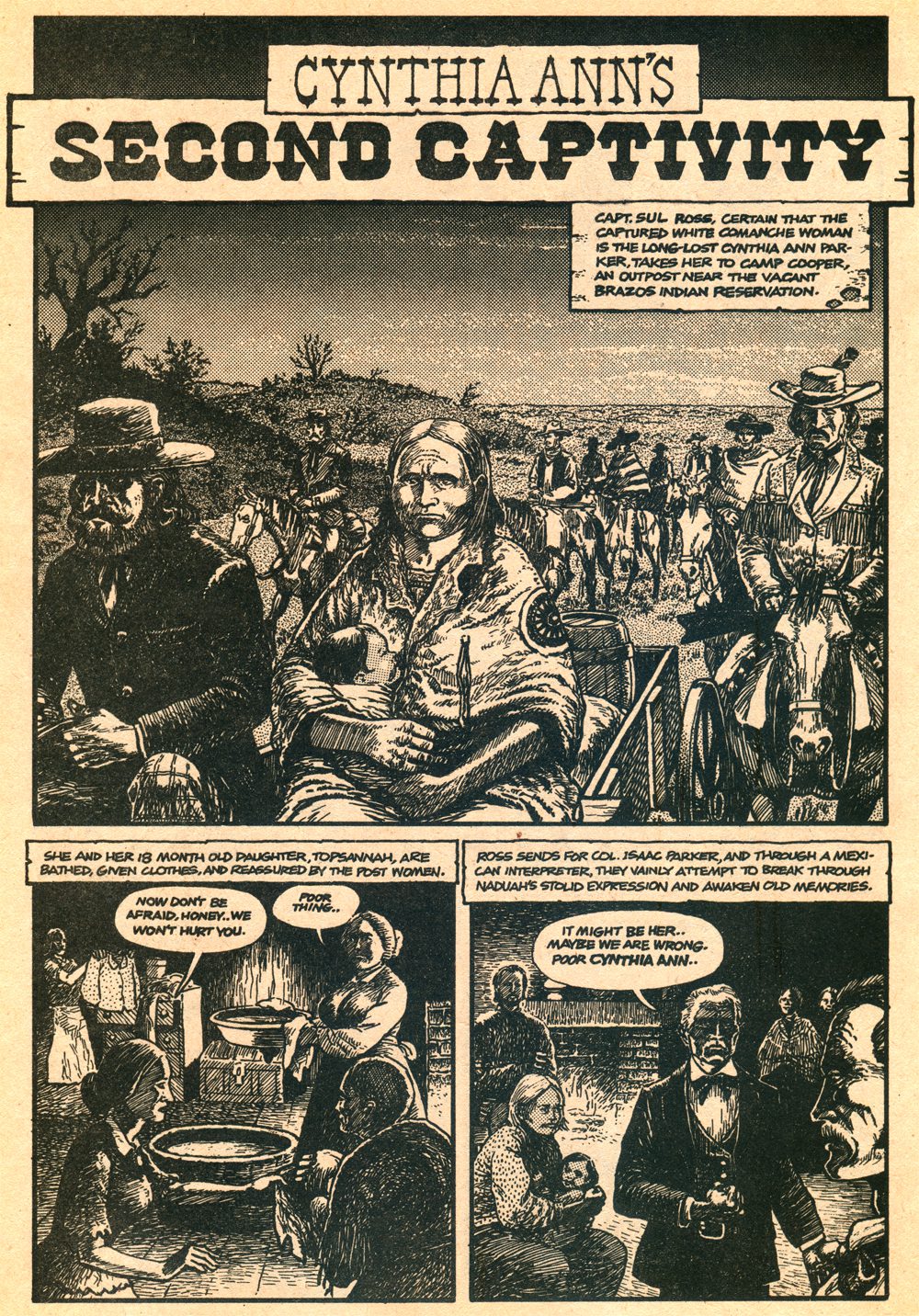 English, and was terribly depressed to be away from her adopted tribe. She tried to escape every chance she got, and as a result she was heavily monitored by her white family. They were astounded and disappointed that she had become “more Indian than white.” After a decade of captivity with her white family, Parker died at the age of 45.
English, and was terribly depressed to be away from her adopted tribe. She tried to escape every chance she got, and as a result she was heavily monitored by her white family. They were astounded and disappointed that she had become “more Indian than white.” After a decade of captivity with her white family, Parker died at the age of 45.
The creator of White Comanche, Jack Jackson—AKA “Jaxon”—was an underground comic artist, originally from Texas. He founded Rip Off Press in 1969 with fellow Texan, Gilbert Shelton, and is known for his 1964 comic God Nose, which some consider to be the very first underground comic. Starting with White Comanche (1977) Jackson went on to become an expert of Texan and Native American history. He published several other illustrated books on the subject including Comanche Moon (1979), The Secret of San Saba (1989), Indian Lover: Sam Houston & the Cherokees (1999), and Indian Agent: Peter Ellis Bean in Mexican Texas (2005), his last publication before his death in 2006.

